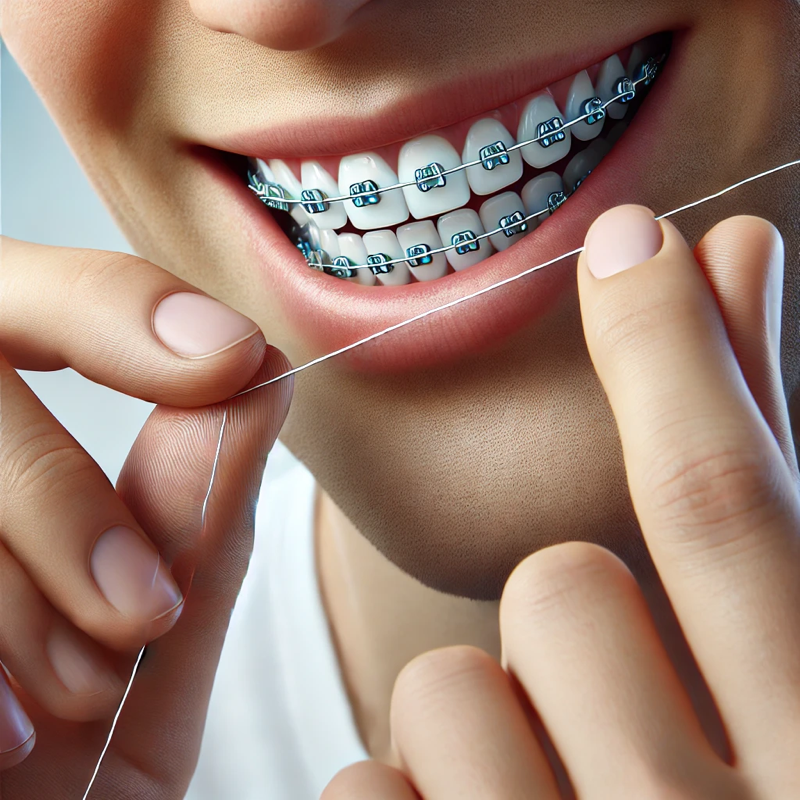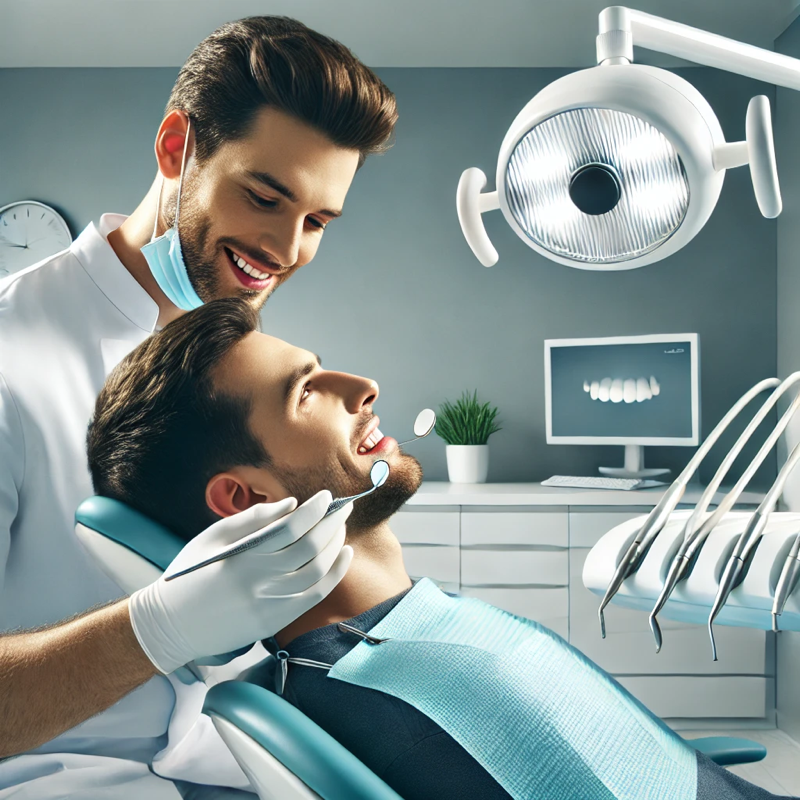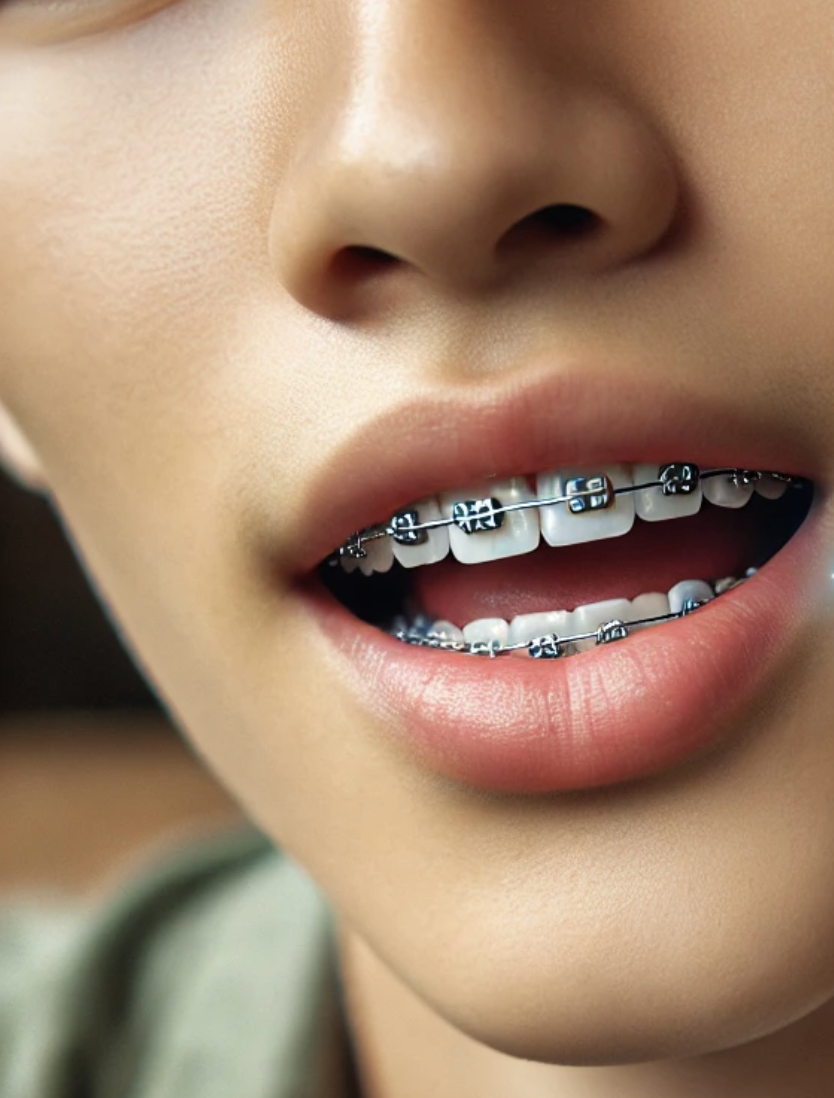smart choices = faster, healthier results

At Kallos, we strongly believe that educated patients achieve the best results and healthiest teeth. Proper care and compliance are essential for achieving the best results with braces and aligners.
From maintaining good hygiene to being mindful of your diet and following treatment instructions, these habits will help you get the most out of your orthodontic treatment. Staying informed and committed to your treatment plan ensures a smoother process and long-lasting, beautiful results!
oral hygiene is paramount
-
![]()
Hygiene with braces
It’s essential to brush your teeth after every meal to remove food and plaque. Use a soft-bristled (electric) toothbrush and toothpaste to clean around the brackets and wires effectively. Be sure to brush the inside, biting surfaces, and front of your teeth, especially near the brackets and gums. This keeps your teeth and gums healthy throughout treatment.
-
![]()
flossing with braces
Flossing can be more challenging with braces, but it’s still crucial. Use orthodontic floss or a floss threader to help you get under the wire and between your teeth. A proxa-brush (or interdental brush) is also great for dislodging food particles stuck between the brackets and your teeth, making flossing easier and more effective. Regular flossing helps prevent plaque buildup and reduces the risk of cavities and gum disease.
-
![]()
hygiene with aligners
With aligners, your oral hygiene routine remains similar to what it was before treatment. Always brush your teeth before reinserting your aligners after meals. This ensures that no food or sugars are trapped between your aligners and teeth, keeping your smile healthy and free from plaque buildup. And remember to floss at least once per day.
-
![]()
-
![]()
using a mouth rinse
Incorporating an alcohol-free mouth rinse into your nighttime routine is a great habit to maintain strong, healthy teeth. It helps reduce plaque buildup, freshens your breath, and provides an extra layer of protection against cavities, ensuring your teeth stay in top condition throughout your treatment.
-
![]()
extra help with a water flosser
A water flosser is a great tool to complement your oral hygiene routine, especially after meals. While it doesn’t replace traditional flossing, it’s an excellent way to flush out food particles and clean around brackets, ensuring that your teeth and gums stay fresh and free from debris.
-
![]()
regular dental visits
Continuing with regular dental check-ups and cleanings is essential for your overall oral health, even during orthodontic treatment. We’re happy to work with your dentist to remove wires when necessary, allowing for X-rays, cavity treatment, or any other dental care needed to keep your smile healthy.
foods to enjoy and leave behind
-
![]()
diet with braces
To protect your braces and ensure smooth progress in your treatment, it’s important to avoid foods that can damage or dislodge your braces, such as hard, sticky, or chewy items. Stay away from popcorn, gum, caramel, and nuts. Hard fruits and vegetables like apples and carrots should be cut into smaller pieces to prevent damage.
-
![]()
avoid sugary, sticky, crunchy, foods
To protect your braces, avoid hard foods like nuts, ice, and raw fruits and vegetables (unless cut into smaller pieces). Steer clear of corn on the cob, ribs, popcorn, sticky or hard candies, chewy meats, crusty bread, and chewing gum. These foods can damage your braces or get stuck, hindering your treatment progress.
-
![]()
Enjoy these foods instead
While wearing braces, enjoy soft, easy-to-chew foods like dairy (soft cheeses, yogurt), tender meats (chicken, turkey, fish), cooked vegetables (mashed potatoes, steamed spinach), and soft fruits (bananas, berries). Stick to grains like pasta, soft bread, and well-cooked rice. Cut harder foods, like raw vegetables and apples, into smaller pieces to protect your braces. These options help maintain your braces while offering a nutritious, tasty diet.
-
![]()
Cutting Your Food
When eating with braces, it’s recommended to cut your food into small, manageable pieces. This reduces the pressure on your braces and helps you avoid damaging the brackets or wires. Using the biting surfaces of your teeth for biting instead of the front part will also help protect your braces.
-
![]()
diet with aligners
Clear aligners come with fewer food restrictions, but you still need to be mindful of your oral hygiene. Always remove your aligners before eating or drinking anything other than water. If you do consume sugary drinks like soda or coffee with sweeteners, be sure to brush your teeth thoroughly before reinserting your aligners. This helps prevent food particles from being trapped inside the aligners, which can lead to cavities or enamel damage.
Living with Braces & Aligners
-
![]()
Playing sports
For Braces: If you play contact sports, wearing a mouthguard is essential to protect your braces and teeth. A good mouthguard minimizes the risk of injury to your teeth, gums, and appliances.
For Aligners: Even though aligners also wrap around your teeth, wearing a mouthguard is still recommended during physical activity to protect your teeth from injury. Aligners themselves don’t offer much protection.
-
![]()
speech adjustments
For Braces: It’s normal to experience some changes in speech when you first get your braces, such as a slight lisp. This is temporary and will improve as you get used to your braces.
For Aligners: You might notice a small change in your speech when you start wearing aligners, but don’t worry—it should resolve within a few days.
-
![]()
Managing Soreness
After your braces are adjusted or after switching to the next set of aligners, you might experience some soreness or tenderness. Eating softer foods, having cold food or drinks, and taking an over-the-counter pain reliever (like Advil or Tylenol) can help relieve any discomfort for the first couple of days. It’s similar to how you might treat a minor sports injury—just give it a little time, and you’ll be back to normal before you know it.
-
![]()
Don’t Forget the Essentials
For Braces: Be sure to keep your rubber bands and orthodontic wax handy, so you can use them if needed and prevent any discomfort.
For Aligners: Remember to bring your aligner case with you! You’ll need it to store your aligners when eating or drinking anything other than water.
















